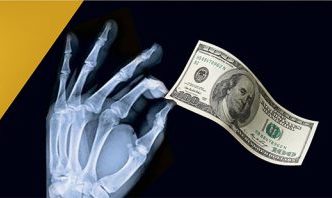Comparing prices for healthcare services can be time-consuming and frustrating. Now it’s easier than it used to be, if you know how to shop.
Common procedures like MRIs, ultrasound, mammography, and colonoscopies can be scheduled in advance and are the most “shoppable.” Start by asking your doctor for the specific name of the exam (being sure to ask if it is with, without, or with and without contrast), or ask for the exam code, which is used for billing purposes. Make sure you understand why the test or procedure is being ordered, which can affect the cost. A colonoscopy, for example, could cost an insured patient anywhere from $0 to $10,000 out of pocket, depending on whether it’s considered “screening” or “diagnostic,” where it’s performed, and whether the facility and/or the physician are in-network.
Most insurers now have online tools that let plan members see how their out-of-pocket costs night vary for the same service at different in-network providers. Some insurers’ tools are cumbersome, and most caution that the amounts listed are just estimates that could change without notice. This is because each facility can be contracted with the same payor for different rates. For example, your Aetna plan will most likely pay a higher rate for hospital based services than an outpatient facility. This, in turn, impacts your out of pocket costs (especially for those in a high-deductible based plan).
Paying Cash
Many providers offer cash or “self-pay” rates that may be lower than what you would pay using your insurance. Insurers’ cost-estimator tools typically don’t give you this information, so you’ll have to call the facility and ask for the cash-pay price. Be sure to ask if ALL fees are included in the estimate (i.e. physician and/or drug fees.
Stand-alone imaging centers, outpatient surgery centers and urgent-care clinics are generally much less expensive than hospitals, and offer lower cash rates to patients who pay at the time of service. Some will look up your coverage, so you can compare the cash price they are offering to the out-of-pocket amount you would owe using your insurance.
Hospitals also offer self-pay rates, though their policies vary widely. Most offer discounts of 20 percent to 80 per cent off their “charges”, but “charges” are often highly inflated list prices that providers work from when negotiating actual fees with insurance companies. Deeper discounts may be available to those who qualify for financial aid, so it pays to call the provider or hospital’s financial-services department and ask.
Consumers seeking to compare cash prices for medical services can now turn to a growing number of websites for help, unfortunately they haven’t been fully developed for northern Nevada as of yet.
High Cost ≠ High Quality
Assessing how providers compare in quality is also important, although that information can be difficult to find. Now that prices are more transparent to customers and patients, people want to know, is that $6.000 MRI so much better than a $600 one with the same billing code two blocks away? Ask your doctor, and if you don’t get a satisfactory answer, take your healthcare into your own hands ind call the facilities directly.


